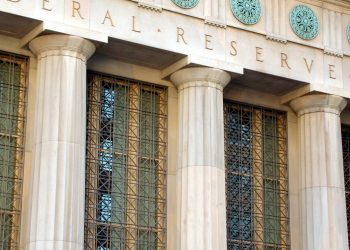The 30-year fixed-rate mortgage (FRM) decreased slightly from last week’s average of 7.79% to an average of 7.76% this week, according to the latest Primary Mortgage Market Survey® (PMMS®) from Freddie Mac released Thursday.
This week’s numbers:
- 30-year fixed-rate mortgage averaged 7.76%, down from last week when it averaged 7.79%. A year ago at this time, the 30-year FRM averaged 6.95%.
- 15-year fixed-rate mortgage averaged 7.03%, unchanged from last week. A year ago at this time, the 15-year FRM averaged 6.29%.
The takeaways:
“The 30-year fixed-rate mortgage paused its multi-week climb but continues to hover under 8%,” said Sam Khater, Freddie Mac’s Chief Economist. “The Federal Reserve again decided not to raise interest rates but have not ruled out a hike before year-end. Coupled with geopolitical uncertainty, this ambiguity around monetary policy will likely have an impact on the overall economic landscape and may continue to stall improvements in the housing market.”
Realtor.com Economic Research Analyst Hannah Jones commented:
“The Freddie-Mac fixed rate for a 30-year loan remained elevated this week, falling just 3 basis points to 7.76% as markets prepared for Wednesday’s FOMC meeting. The Fed elected to hold the target rate at 5.25-5.5%, as expected, but emphasized once again that price stability and maximum employment are still the committee’s central goals. Though the committee chose to take a pause from further contractionary policy in this week’s meeting, Chair Powell made the point that the committee will remain open to further policy action to bring inflation down to 2% over time, dependent on incoming data.
“The U.S. Treasury Department announced on Wednesday that it will slow the pace of longer-dated debt issuance, announcing a lower-than-expected pick-up in 10-year and 30-year bond issuance. However, longer-term debt issuance will continue to climb, which keeps upward pressure on mortgage rates. In general, an increase in a specific bond supply leads to a pick-up in the bond’s yields as more incentive is required to induce more investors to buy up the additional supply. So, the increase in debt issuance keeps upward pressure on longer-term bond yields and therefore mortgage rates, despite the increase being smaller-than-expected.
“This week’s economic developments are slightly on the positive side of neutral for mortgage rates. The shift in bond issuance did not take significant pressure off of longer-dated bond yields, but neither did it apply much additional pressure. Similarly, the Fed’s pause on rate hikes signaled that the FOMC will continue their ‘wait and see’ approach to future hikes, which means future policy is dependent on incoming economic data, which is currently unknown. Considering the seemingly-relentless upward hike of mortgage rates over the last couple months, the lack of information to fuel another jump is relatively positive, even if the underlying conditions to warrant falling rates have not yet been achieved.
“Today’s buyers face scarce for-sale inventory, still-high listing prices, and multi-decade high mortgage rates, so any potential relief from climbing housing costs is welcomed. October’s housing data highlighted the limited options and competitive conditions that today’s buyers face. Both active listing and new listings fell year-over-year in October, prices climbed, and homes spent slightly less time on the market which, combined with high mortgage rates, means home shoppers are facing higher housing payments and tighter market conditions this fall.”












